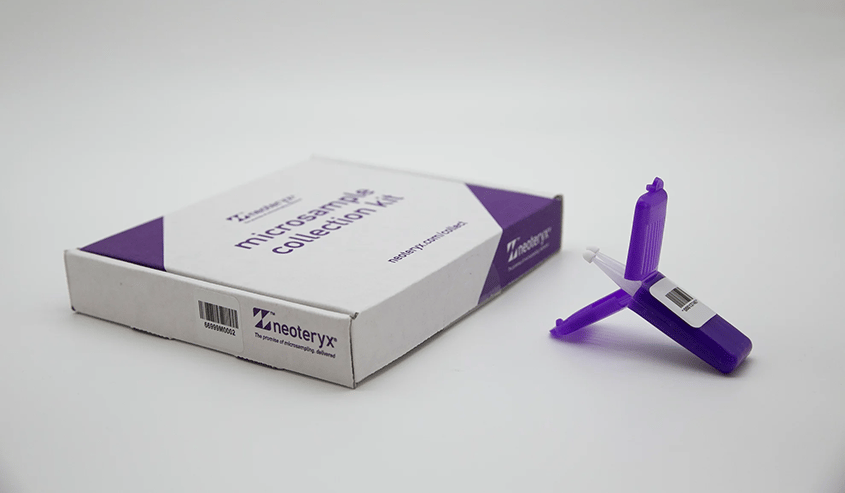Share this
The Critical Role of Dose Calculation in Immunosuppressant Therapy (IST)
by Neoteryx Microsampling on May 10, 2016 10:00:00 AM

It's a familiar situational irony that many life-saving medications and courses of treatment used in modern medicine double as potentially lethal poisons. While they can bring profound healing and relief, when misused, they can be dangerous, even lethal. This duality is heightened in treatments like vaccines, chemotherapy, and especially in organ transplantation, which introduces a foreign entity into the human body.
In transplantation, the organ itself is the “treatment” of the patient’s ailment, but transplanting a donor organ into a recipient is the equivalent of planting a ticking time-bomb in their body. Even in cases of a close match, the body’s immune response mounts an attack against the foreign organ, causing graft loss and rendering the organ useless.
The Delicate Balancing Act
 In organ transplantation Immunosuppressant Therapy (IST), is a crucial player. While it's a necessity to prevent the body's rejection of the new organ, the therapy itself can introduce new risks. By suppressing the immune response, these medications also lower the body's defenses against other potential infections.
In organ transplantation Immunosuppressant Therapy (IST), is a crucial player. While it's a necessity to prevent the body's rejection of the new organ, the therapy itself can introduce new risks. By suppressing the immune response, these medications also lower the body's defenses against other potential infections.
Determining the correct dosage of IST is vital. An overdose can make a patient vulnerable to infections, while an underdose can cause the body to reject the new organ. For that reason, it is of paramount importance to get the right combination of immunosuppressive drugs and to calibrate the dosage exactly in order for the “poison” to stay within its narrow therapeutic window. It's a thin tightrope that medical professionals must walk, requiring precision and frequent monitoring.
One Size Does Not Fit All
 The challenge is that every individual reacts differently to medications. Factors such as race, age, and medical history come into play. As a result, the era of "one size fits all" medication has ended. Today's approach focuses on the individual, understanding their specific needs, and continuously adjusting the treatment based on feedback. This feedback loop is maintained using Therapeutic Drug Monitoring (TDM).
The challenge is that every individual reacts differently to medications. Factors such as race, age, and medical history come into play. As a result, the era of "one size fits all" medication has ended. Today's approach focuses on the individual, understanding their specific needs, and continuously adjusting the treatment based on feedback. This feedback loop is maintained using Therapeutic Drug Monitoring (TDM).
Given the delicate individual balance that must be struck and the devastating consequences if immunosuppressant levels are wrong, it is shocking that the biggest problem with IST isn’t actually the calibration of medication by the practitioner, but rather the non-adherence of patients to their post-op regimens.
A shocking number of patients miss their doses, making it all the more difficult for doctors to remain informed about their patients’ status and to make changes accordingly.
Innovation for Better Monitoring: Blood Microsampling

One solution gaining traction is blood microsampling. This technique allows patients to draw a small blood sample via a simple finger prick at home, which they can then send to a lab for analysis. This cuts out time spent traveling to and from the clinic and eliminates the need for painful blood draws where large volume samples are taken. At-home sampling offers doctors more frequent data, enabling them to better calibrate the patient’s IST regimen.
The Way Forward
With organ transplantation, there's no margin for error. The stakes are high, with patients' lives hanging in the balance. But with technological advances and new methods like blood microsampling, we're moving towards a world where treatment is not only more effective but also more personalized and patient-centric.
As healthcare evolves, our approach to treatment and monitoring must evolve as well, prioritizing the comfort and convenience of the patient while ensuring the highest quality of care. The introduction of innovative techniques like blood microsampling is a significant step in that direction.
Share this
- Microsampling (206)
- Research, Remote Research (119)
- Venipuncture Alternative (105)
- Clinical Trials, Clinical Research (83)
- Mitra® Device (73)
- Therapeutic Drug Monitoring, TDM (51)
- Dried Blood Spot, DBS (39)
- Biomonitoring, Health, Wellness (30)
- Infectious Disease, Vaccines, COVID-19 (24)
- Blood Microsampling, Serology (23)
- Omics, Multi-Omics (21)
- Decentralized Clinical Trial (DCT) (20)
- Specimen Collection (18)
- Toxicology, Doping, Drug/Alcohol Monitoring, PEth (17)
- Skin Microsampling, Microbiopsy (14)
- hemaPEN® Device (13)
- Preclinical Research, Animal Studies (12)
- Pharmaceuticals, Drug Development (9)
- Harpera Device (7)
- Industry News, Microsampling News (5)
- Antibodies, MAbs (3)
- Company Press Release, Product Press Release (3)
- Environmental Toxins, Exposures (1)
- July 2025 (1)
- May 2025 (1)
- April 2025 (2)
- December 2024 (2)
- November 2024 (1)
- October 2024 (3)
- September 2024 (1)
- June 2024 (1)
- May 2024 (1)
- April 2024 (4)
- March 2024 (1)
- February 2024 (2)
- January 2024 (4)
- December 2023 (3)
- November 2023 (3)
- October 2023 (3)
- September 2023 (3)
- July 2023 (3)
- June 2023 (2)
- April 2023 (2)
- March 2023 (2)
- February 2023 (2)
- January 2023 (3)
- December 2022 (2)
- November 2022 (3)
- October 2022 (4)
- September 2022 (3)
- August 2022 (5)
- July 2022 (2)
- June 2022 (2)
- May 2022 (4)
- April 2022 (3)
- March 2022 (3)
- February 2022 (4)
- January 2022 (5)
- December 2021 (3)
- November 2021 (5)
- October 2021 (3)
- September 2021 (3)
- August 2021 (4)
- July 2021 (4)
- June 2021 (4)
- May 2021 (4)
- April 2021 (3)
- March 2021 (5)
- February 2021 (4)
- January 2021 (4)
- December 2020 (3)
- November 2020 (5)
- October 2020 (4)
- September 2020 (3)
- August 2020 (3)
- July 2020 (6)
- June 2020 (4)
- May 2020 (4)
- April 2020 (3)
- March 2020 (6)
- February 2020 (3)
- January 2020 (4)
- December 2019 (5)
- November 2019 (4)
- October 2019 (2)
- September 2019 (4)
- August 2019 (4)
- July 2019 (3)
- June 2019 (7)
- May 2019 (6)
- April 2019 (5)
- March 2019 (6)
- February 2019 (5)
- January 2019 (8)
- December 2018 (3)
- November 2018 (4)
- October 2018 (7)
- September 2018 (6)
- August 2018 (5)
- July 2018 (8)
- June 2018 (6)
- May 2018 (5)
- April 2018 (6)
- March 2018 (4)
- February 2018 (6)
- January 2018 (4)
- December 2017 (2)
- November 2017 (3)
- October 2017 (2)
- September 2017 (4)
- August 2017 (2)
- July 2017 (4)
- June 2017 (5)
- May 2017 (6)
- April 2017 (6)
- March 2017 (5)
- February 2017 (4)
- January 2017 (1)
- July 2016 (3)
- May 2016 (1)
- April 2016 (2)



No Comments Yet
Let us know what you think